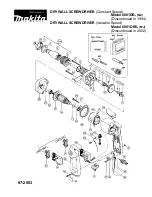
In this appendix:
Overview .................................................................................. D-1
Programming and reading registers ......................................... D-5
Clearing the registers ............................................................... D-6
Status byte and service request ............................................... D-7
Status register sets................................................................... D-9
Queues ................................................................................... D-20
Serial polling and SRQ ........................................................... D-21
Status model programming examples .................................... D-22
Overview
The status model consists of status register sets and queues. You can monitor the status model to
view instrument events; you can also configure the status model to control the events. The most
essential part of the status structure is the Status Byte Register. This register can be read by a test
program to determine if a service request (SRQ) has occurred and what event caused it.
As you work with the status model, remember that the end result applies to the Status Byte Register.
All the status register sets and queues flow into the Status Byte Register. Your test program can read
this register to determine if a service request (SRQ) has occurred, and if so, which event caused it.
The Status Byte Register sets and queues include:
Standard Event Register
Questionable Event Register: Questionable Instrument Event Register (Questionable Instrument
Summary Event Register)
Operation Event Register: Operation Instrument Event Register (Operation Instrument Summary
Event Register)
Measurement Event Register: Measurement Instrument Event Register (Measurement Instrument
Summary Event Register)
Output queue
Error queue
Appendix D
Status model
















































